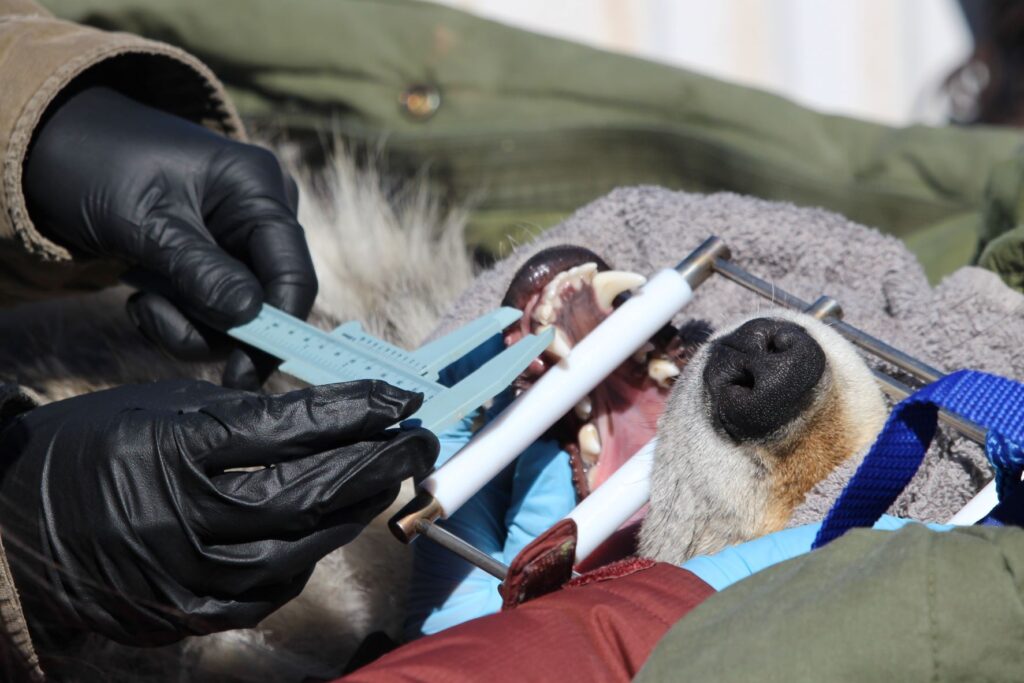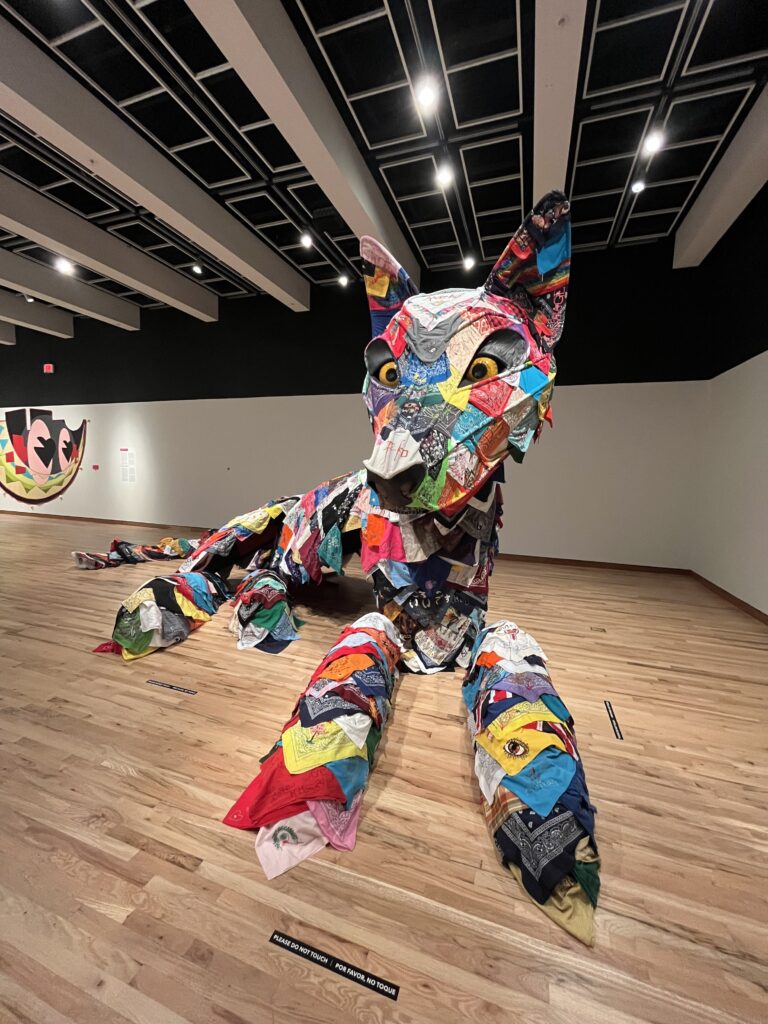‘Capitalism, among other things, had made the wolf a wolf.’

Last Friday, the New Mexico Game Commission hosted a special listening session on Mexican gray wolf management in the state. As one of the commissioners noted, this is the first time they’ve done that, and it provided people the chance to spend three minutes each talking about their hopes, ideas, support, or disapproval of the reintroduction of wolves in New Mexico and Arizona. (Be sure to check out Bryce Dix’s story for KUNM about the session, which Chair Richard Stump didn’t attend.)
Comments ranged from a call to improve the genetics of the population by reintroducing more family groups, expanding the recovery area to north of Interstate 40, and allowing dispersed wolves to breed with northern gray wolf populations in Colorado — to decrying the program altogether. It was an illuminating meeting, in part because it reminded me how high emotions run when it comes to almost any discussion of wolves. The session also provided a real-time view into how a small number of people can have a great deal of control over something as existential as the presence of an entire species across a landscape.
So much has been written about wolves, including around the politics of reintroduction. But one of the most interesting things I’ve seen recently is from Erica Berry’s excellent book, Wolfish: Wolf, Self, and the Stories We Tell About Fear.
In that book (which I’m about halfway through), Berry explores what a wolf is, genetically as well as culturally. She writes:
“Wolf as savior, wolf as mother, wolf as predator, wolf in brain. ‘If the definition of a dog is simply a wolf that lives with humans, we have a conundrum, because different cultures define their canid companions according to their own experiences, and the question becomes, who gets to make that distinction?’ write (Brandy) Fogg and (Raymond) Pierotti in The First Domestication. They argue that the boundary between wolf and dog has been porous for the last 40,000 years, when coevolutionary relationships between Indigenous people and dogs likely began. In The Last Wolves of Japan, historian and philosopher Brett Walker’s chronicle of shifting Japanese perspectives around the predator, he argues that the distinction between the two canines did not calcify until cattle farming ramped up around the mid-twentieth century. That’s when the Japanese government began importing wolf-killing techniques from the American west; the ‘father of Hokkaido agriculture,’ Walker notes, was an Ohio rancher who introduced strychnine to poison the region’s wolves. The main thing that had changed about Japan’s wolves was the economic world they existed in. Capitalism, among other things, had made the wolf a wolf.”
The New Mexico Interstate Stream Commission has reviewed comments and submissions about water planning. You can read the New Mexico Water Security Planning Act Engagement Summary Report online and also explore the agency’s data dashboard.
Just some of the news you shouldn’t miss:
• “Climate change identified as main driver of worsening drought in the Western United States” (Ian James, Los Angeles Times)
• “Texas Sued New Mexico Over Rio Grande Water. Now the States are Fighting the Federal Government” (Martha Pskowski, Inside Climate News)
• “Drill, Baby, Drill? Former Big Oil Exec Says That’s Exactly What the Industry Doesn’t Need.” (Jerry Redfern, Capital & Main)
• “Trump’s ‘Drill, Baby, Drill’ Cuts Two Ways for Oil Companies” (Rebecca F. Elliott, The New York Times)
• “Trump taps former New York congressman Lee Zeldin as EPA chief” (Maxine Joselow and Mariana Alfaro, The New York Times)
• “How will a second Trump presidency shape the Colorado River?” (Alex Hager, KUNC)
• “At U.N. climate talks, many leaders take a pass on an ‘unmissable’ moment” (Chico Harlan and Maxine Joselow, The Washington Post)
• “Wildfire suppressants dumped nearly a million pounds of toxic metals into the West U.S.” (Hunter Bassler, Wildfire Today)
• “Hearing starts on proposal to ban toxic chemical from oil and gas operations” (Megan Gleason, Albuquerque Journal)
• “How an epic bird migration hinges on just one tiny insect” (Daniel Rothberg, Vox)
• “An ‘otter’ success for New Mexico restoration project” (Alaina Mencinger, Santa Fe New Mexican)
This isn’t an environment story, but it’s the best thing I’ve read lately: “Shift from library time to tech time prompts sixth grader’s protest movement.” All I can say is, Count me in as one of your supporters, Rainier Long!
And thanks to Dr. K. Maria Lane (author of Fluid Geographies and friend of the show) for reminding me about this beautiful Natalie Diaz poem, “The First Water is the Body.” It’s originally from her 2020 collection, “Postcolonial Love Poem,” but Emergence Magazine reprinted it last year.

Each/Other by Cannupa Hanska Luger and Marie Watt at the Albuqureque Museum
Lastly, if you haven’t been to the Albuqureque Museum lately, I’d recommend taking the trip. I always love “Common Ground,” the permanent exhibit of New Mexico art, and there are three current exhibits worth spending a lot of time with, including 1) “Vivarium: Exploring Intersections of Art, Storytelling, and the Resilience of the Living World;” 2) a textile score and sound installation by Raven Chacon; and 3) “Broken Boxes,” which the museum’s website describes as featuring “large-scale installation, sculpture, video, and a robust programming line-up celebrating the work and ideas of 23 artists who have contributed to Dunnill’s Broken Boxes podcast.”
P.S. If a friend forwarded you this message, sign up here to receive the newsletter yourself. You can also read recent newsletters online. And if you miss us throughout the week, follow Our Land on Instagram.


